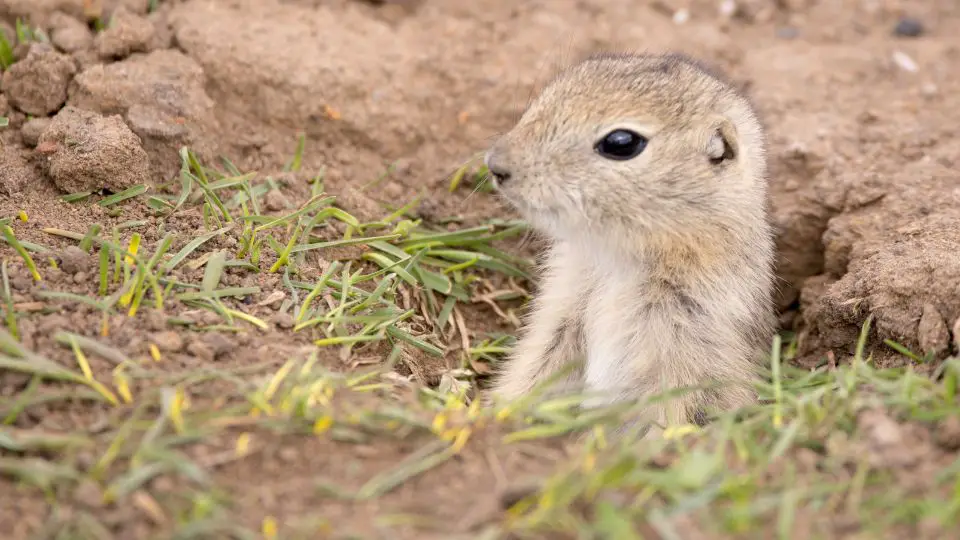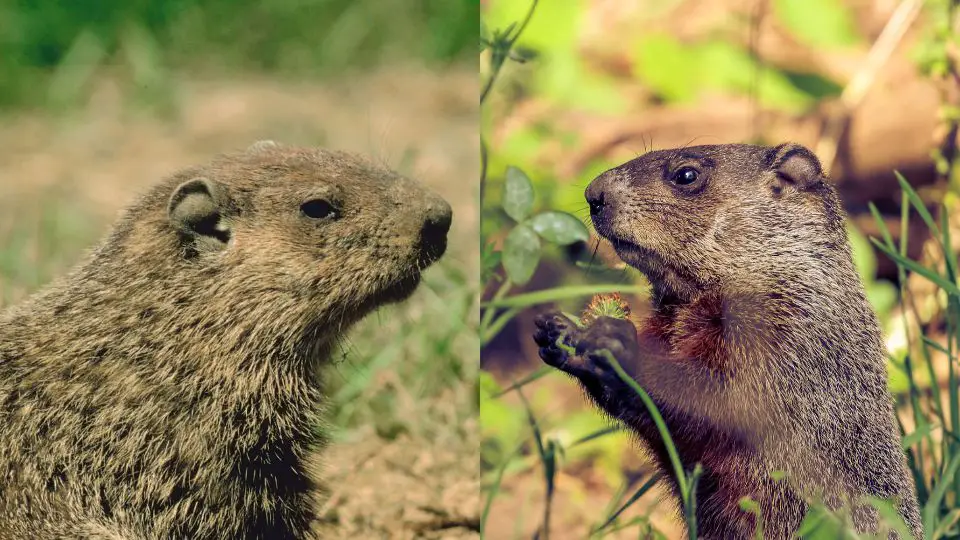Gophers and woodchucks are both rodents that enjoy digging and gnawing. They both have a diet consisting mainly of plants. Both their habits cause damage to yards. However, woodchucks and gophers are not the same animals. The key difference is that woodchucks are significantly bigger than gophers.
Table of Contents
What’s the difference between a woodchuck and a gopher?
Even though woodchucks and gophers have similar physical traits and similar behaviors, they are two different animals. Their taxonomy is different. Woodchucks belong to the family Sciuridae, which is the squirrel family.
Other members of the squirrel family are chipmunks and prairie dogs. Gophers belong to the family Geomyidae. Pocket mice and kangaroo rats are other animals in the family Geomyidae.
Gophers have cheek pouches that they use to store food. Their pouches are the reason that they are called pocket gophers. Woodchucks do not have this feature.
Woodchuck vs Gopher
Woodchucks
- Common name is groundhog
- Found in North America
- Prefer wooded areas and open land
- Dark brown or black feet
- Thick and bushy tail
- White teeth that can’t be seen when its mouth is closed
- Lifespan is up to about six years
- Mate once a year
- Hibernate in the winter
- Spend most of their life above ground
Gophers
- Common name is pocket gopher
- Found in North and Central America
- Live in any environment with rich soil
- Pink feet
- Thin and hairless tail
- Large, yellow front teeth that are always visible
- Lifespan is up to about three years
- Can mate up to three times each year
- Don’t hibernate in the winter
- Spend most of their life underground

Which one is bigger?
Woodchucks are bigger than gophers. Gophers grow to about 7 inches (17 cm) in length, while woodchucks grow to about 20 inches (50 cm). Gophers weigh about 2 pounds (1 kg), while woodchucks weigh about 13 pounds (6 kg). The size difference of these wild animals is the easiest way to tell which animal is which.
A woodchuck’s feet are bigger than a gopher’s. Gophers have smaller and thinner feet than woodchucks. The tail of a gopher could be up to three inches (7 cm) long. The tail of a woodchuck could be up to 6 inches (15 cm) long.
Which one is more detrimental to your house and yard?
Gophers and woodchucks are known as pests because both of them cause significant damage to yards. This damage is made by gnawing, digging, and eating. Gophers cause more damage to yards since they enjoy digging the most. Woodchucks cause more damage to homes because they enjoy gnawing the most.
Gophers primarily feed on tubers, roots, and bulbs of plants. In order to get to these parts of a plant, they dig. Their digging and eating can ruin flowerbeds and vegetation. Woodchucks eat the tops of plants.
They mostly enjoy eating dandelions and leaves. Although their eating habits will still ruin gardens, they destroy them in a different way than gophers do.

Woodchuck Holes vs Gopher Holes
Gophers and woodchucks are both burrowing rodents, making holes in the ground. Gophers create extensive tunnel systems, while woodchucks create small nesting sites called dens. Both types of burrows can cause damage.
The holes they create can ruin the appearance of your yard and can also cause tripping hazards. If a gopher or woodchuck makes a burrow outside your home, it can cause structural damage to your house.
Gophers and woodchucks both gnaw on items in order to keep their incisors growing. Both critters chew on bark. This can ruin the appearance of trees and could harm the tree. Woodchucks cause more damage with their gnawing than gophers because woodchucks gnaw on wires.

